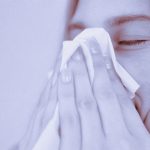
SATURDAY, Nov. 26, 2022 (HealthDay News) – It’s possible to have a joy-filled holiday season while keeping allergies and asthma in check. Being aware of triggers is a key, according to the American College of Allergy, Asthma and Immunology (ACAAI). “While the holidays bring much joy, some of the good times can be derailed by allergy and asthma flares,” said allergist Dr. Kathleen May, president of ACAAI. “A few well-placed precautions can keep you healthy and get your new year off to a great start as well.” Here are some tips to keep sneezing and wheezing at bay. Food allergens: When you’re invited to eat at someone else’s house, tell your host about foods your family needs to avoid. Ask the host to mark containers so it’s clear what is in them. When there’s a potluck, let everyone involved know your restrictions. Or consider hosting at your home, which gives you more control over ingredients. Decor dangers: Seasonal decorations have some hidden allergy triggers. Some people have skin reactions to terpene, which is found in tree sap. Others may have a reaction if they inhale mold spores and pollen found on fresh trees and greenery. Consider washing your tree before bringing it inside. Even an artificial tree may need cleaning to remove dust and mold from the previous year. Consider cleaning other decorations before putting… read on > read on >





































